Meet the Souvlaki Wrapper Who’s Served Athens for...
Discover how Christos, Athens’ master souvlaki...
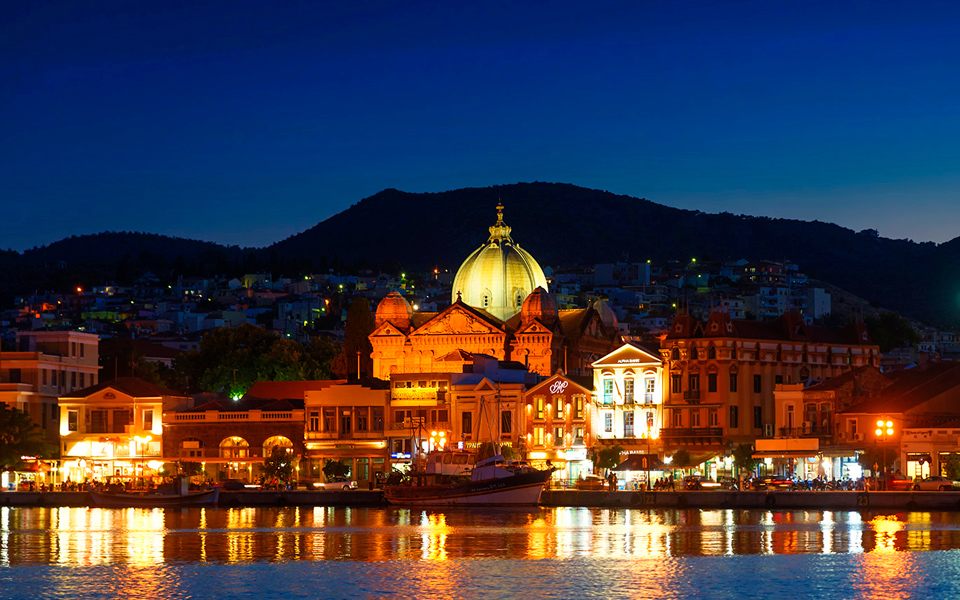
The magnificent town hall against the seafront of Lesvos
© Perikles Merakos
Lesvos combines mountainous beauty, picturesque villages with plane trees, age-old professions, culinary tradition and a natural environment that astonishes, especially in September when temperatures drop but the sunsets remain unchanged.
“Vanilla”, a thick white sticky paste that is actually made of mastic resin, not vanilla, and served as a spoonful immersed in a tall glass of ice-cold water, is a vintage treat mostly associated with visits to grandma houses and cafes in bygone eras. Vanilla, commonly referred to as ypovrihio, is not commonly served at cafes these days – unless you are on Lesvos. The island is full of traditional cafes that safeguard the threatened vanilla tradition. Old cooking pots and utensils, bottles, frames, clocks, coat hangers, wall menus with prices, religious icons, diaries, posters and signs displaying old proverbs of wisdom adorn the walls of perennial cafes, museum-like places that remain functional.
If the café walls could talk, they would have plenty to relay in terms of plenty of gossip, wise thoughts, concerns and philosophies expressed over the years by customers relaxed while enjoying their ouzo, morning coffee, card games and backgammon. These social groups are open. Passersby are welcome to join in.
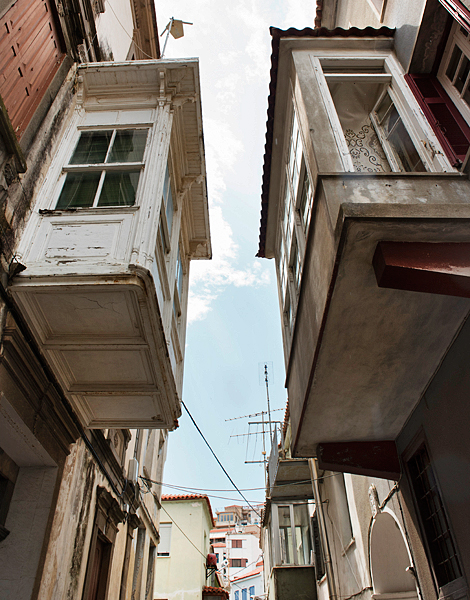
Lesvos has retained its old charm well into the modern age
© Vangelis Zavos
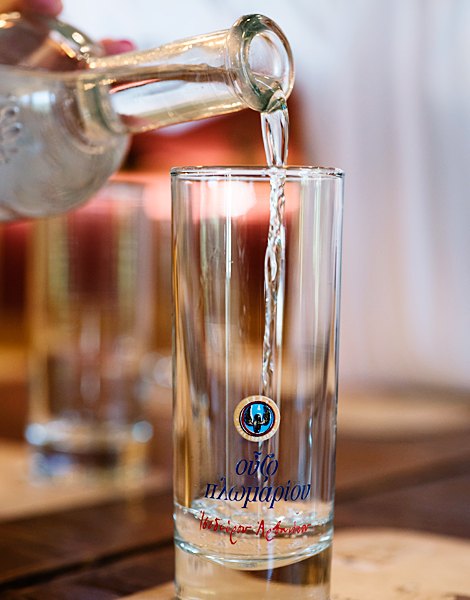
The island's drink of choice is ouzo, and ouzo from Lesvos is considered among the best in the whole country
© Vangelis Zavos
A large proportion of the ouzo produced at the island’s 17 distilleries remains on Lesvos. Plenty of ouzo, the renowned aniseed spirit whose tradition and know-how is said to have been brought over to Greece by Anatolian Greeks, is consumed on the island. Drinkers usually have their favorite brands. It is not uncommon to see various bottle brands at the one table of friends. Experienced ouzo drinkers – there are plenty on Lesvos – can distinguish the finer differences between one distillery’s produce to another. Ouzo is typically accompanied by salted sardines as a meze dish.
The island’s Kalloni gulf, blessed with rich biodiversity, is renowned throughout Greece for its meaty and juicy sardines. Whether grilled on the barbecue or salted, as prepared at cafes, or placed in tupperware and salted in layers, as is common at households, they are delicious. Besides sardines, expect to see other traditional ouzo-accompanying meze dishes brought to your table, including ladotyri, a hard cheese matured and preserved in olive oil, local olives and giouzlemedes, small pie pieces filled with myzithra cheese and herbs.
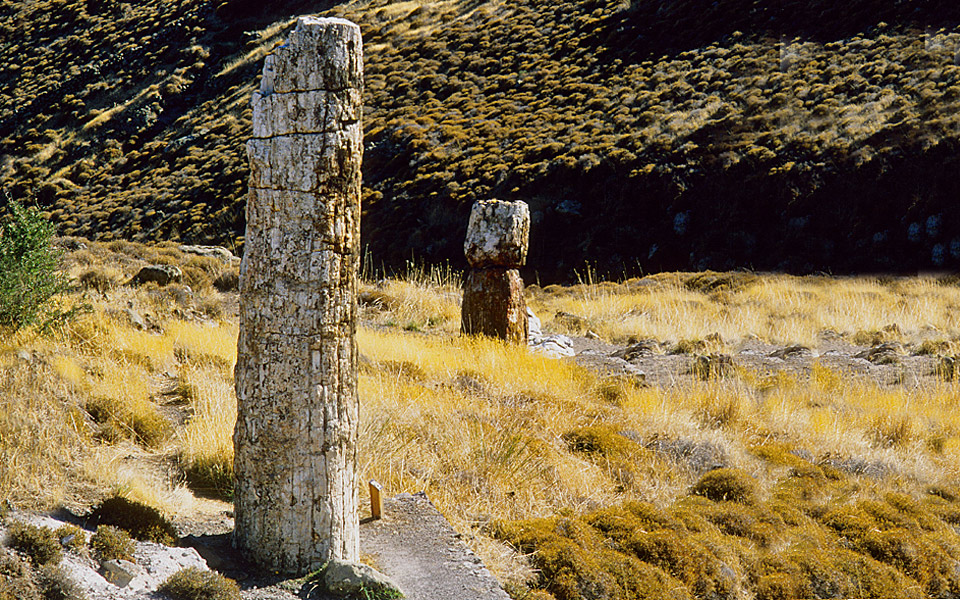
The island's world-famous petrified forest is an unmissable sight
© Clairy Moustafellou
The aesthetic style of the Aegean has not influenced this place. Houses in most villages are each painted with a different color and dissimilar in style. Even so, disharmony is avoided. Stone buildings with wooden ceilings, which look more like constructions designed for snow-covered mountain slopes but are, in fact, located by the sea offer a stylish architectural touch. This is evident in Molyvos, the island’s tourism capital, on the north-northwest coast. Do not miss visiting the Byzantine-era castle at the village’s hilltop. It is reached by heading uphill along extremely charming alleys. Located at the island’s southernmost point, Plomari, the traditional home of ouzo, is also worth visiting for its lovely beaches and architecture. Traditional sahnisia, houses with protruding indoor window sections, known as erker, may be seen here.
Eressos, a volcanic village featuring old monasteries and points of historic interest, is also worthwhile. Sappho, the ancient Greek lyric poet, is believed to have been born here. The arts, including literature, flourished on Lesvos from as far back as antiquity. The island is also the homeland of Alcaeus, another prominent ancient Greek poet. Nobel prize-winning poet Odysseas Elytis, writing on Lesvos, his family’s homeland, noted: “Nowhere else in the world do the Sun and the Moon rule together so harmoniously, or share their power so justly, as on this piece of land which, once upon a time – who knows during which unbelievable times – some God, in order to have His fun, severed and blew away, just like a plane tree leaf in the middle of the ocean.”
“Stone buildings with wooden ceilings, which look more like constructions designed for snow-covered mountain slopes but are, in fact, located by the sea offer a stylish architectural touch.”
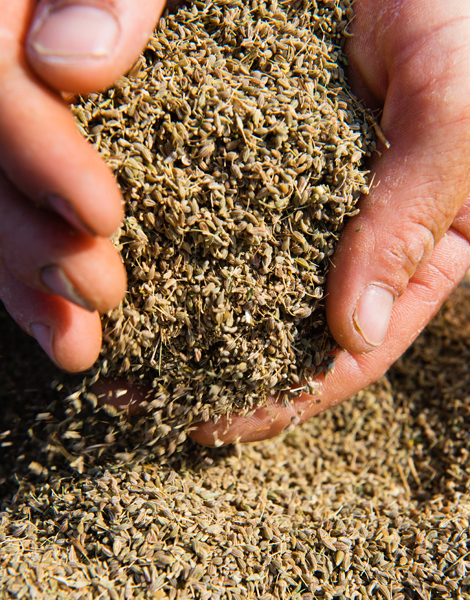
Tiny, aromatic aniseed seeds, the key ingredient for Lesvos' famous ouzo
© Vangelis Zavos
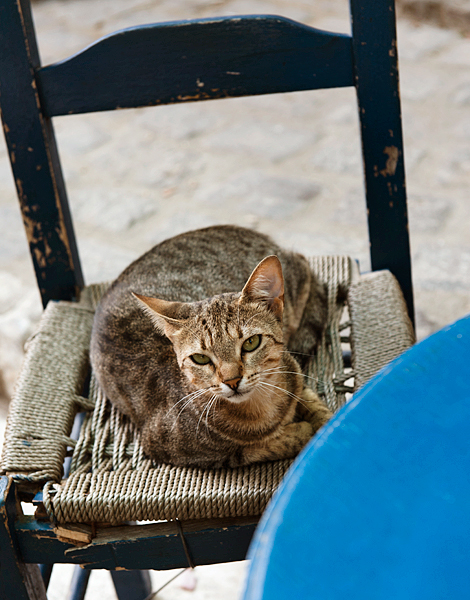
Take the lead from the island's local residents (of all species) and pick one of the many taverns to sample Lesvos' renowned meze
© Vangelis Zavos
“Lesvos is also home to the world’s second largest Petrified Forest, a member of UNESCO’s Global Geoparks Network. ”
The island’s Kalloni and Gera wetlands have established the island, Greece’s third largest, as one of Europe’s leading bird-watching destinations. Birdwatchers with telescopes and binoculars take discreet positions amid olive groves, reeds and salt marshes, especially in autumn and spring, to observe migratory birds, impressive bird species and rare insects. The flamingoes are a perennial favorite for photographers.
Lesvos is also home to the world’s second largest Petrified Forest, a member of UNESCO’s Global Geoparks Network. Measuring 15,000 hectares and surrounded by the areas of Sigri, Skala-Eressos, Eressos, Antissa and Gavathas, on the island’s west side, this Petrified Forest was created by intense volcanic activity 20 million years ago. Exploring the area is an amazing experience. Parts of tree trunks, branches, roots, fruit, leaves, ancestral forms of trees we know today, as well as animal bones may be seen. A visit to the Lesvos Petrified Forest’s Natural History Museum in Sigri, where a rich collection of findings is on display, offers plenty of insight into the evolution of the Northern Aegean’s ecosystem 20 million years ago, and, more generally, Earth’s flora.
The island’s land is bountiful, producing abundant fruit and nuts. Local production includes Lisvori anise, an aromatic herb considered as being one of the world’s finest in quality. It is primarily used to make ouzo. Indicative of the island’s fertility, olive trees grow as close as three meters from the sea in certain parts of Lesvos. Old olive press and soap producing facility chimneys are scattered all over the island as reminders of its early industrial production. These chimneys have aged beautifully. Many are lit. Visiting the Lesvos Industrial Olive-Oil Production Museum, at the village Aghia Paraskevi, offers an educational experience on the changes brought about by industrial development in olive oil production.
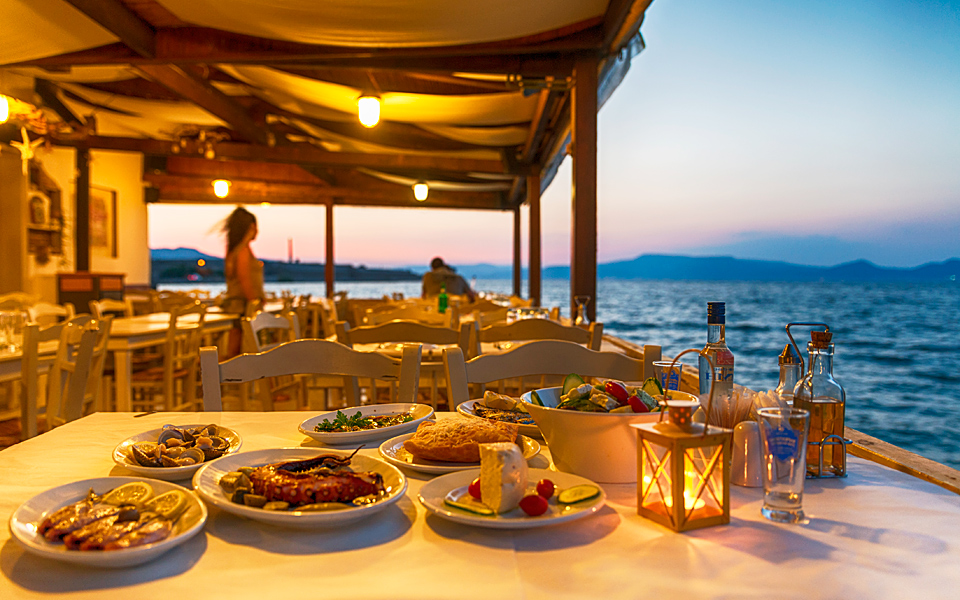
An inviting sea, beautiful sunsets and delicious food - Lesvos has all three
© Vangelis Zavos
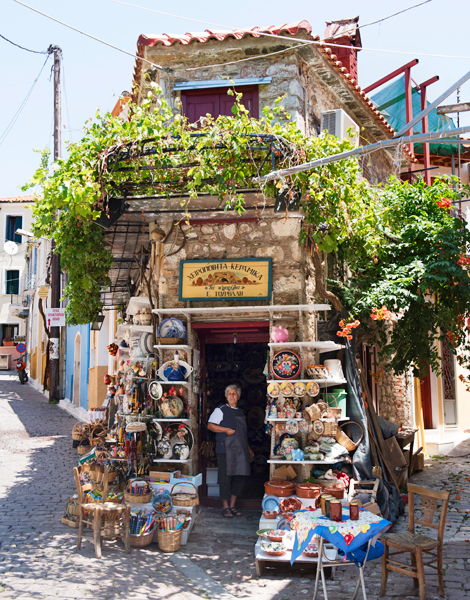
Small shops such as this one are the perfect place to pick up local arts and products
© Vangelis Zavos
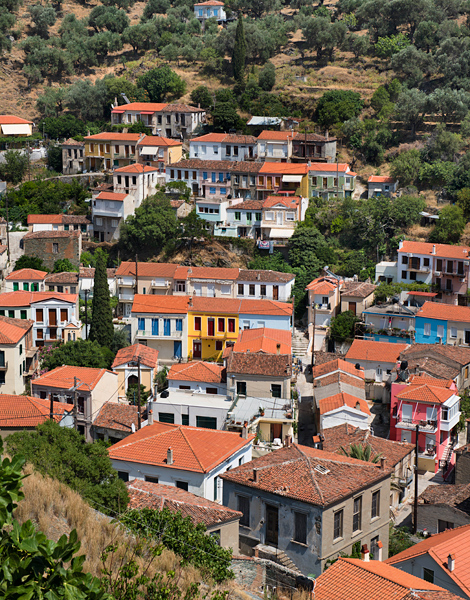
It may appear that the island's architecture is a mishmash of styles, but somehow it works
© Vangelis Zavos
Stratis Eleftheriadis, best known as Tériade, a major publisher and art collector who published work by some of the finest artists of the 20th century, was Greek, and, more specifically, hailed from Lesvos. Eleftheriaidis left Greece in 1915 to study law in Paris but, not before long, abandoned his studies to focus on his era’s artistic developments, initially as an art critic for magazines and newspapers. He supported emerging artists of his period, earning their trust, and ended up collaborating with the likes of Bonnard, Matisse, Picasso, Miró and other legendary artists.
Eleftheriaidis published numerous books with illustrations by major artists. Later on, Eleftheriaidis returned to homeland Lesvos and contributed works from his personal collection to a new museum, the Tériade Museum, in the island’s Varia region. Launched in 1979, its collection includes work by Picasso, Chagall, Matisse and other significant artists, Greek and French. Eleftheriadis is credited for having discovered, supported and promoted Greek folk painter Theophilos Hatzimihail, from Varia, who suffered hardship, even ridicule for his work, during his time, but is nowadays highly regarded. A museum dedicated to this early 20th century artist’s work is located just meters away from the Tériade Museum. His work is divided into two themes, one focused on nature and man, the other depicting scenes from Greek mythology, history and religion.
Discover how Christos, Athens’ master souvlaki...
A hidden gem in Pangrati where...
From postmodern bougatsa to wood-fired pizza...
Among the many city eateries offering...